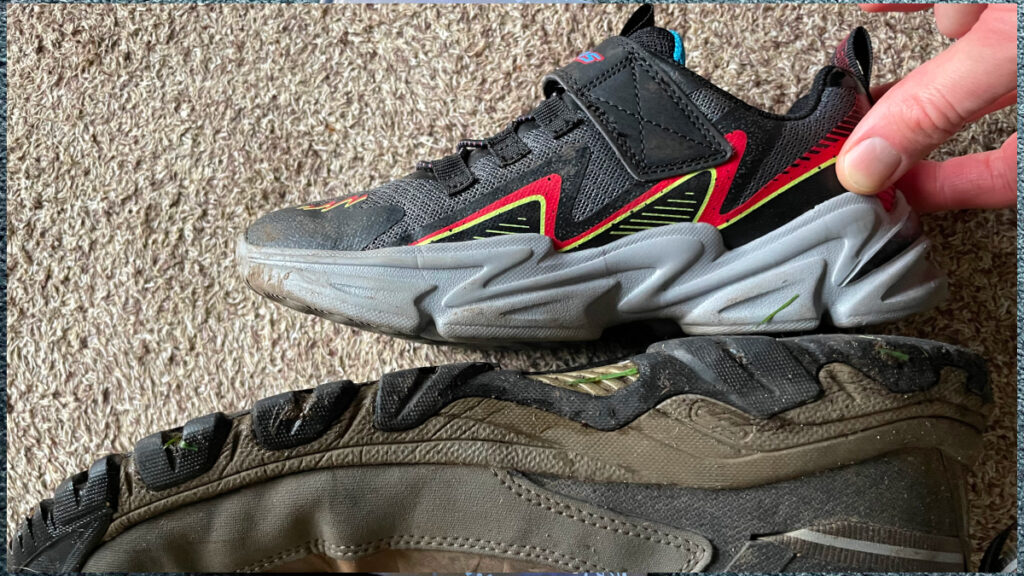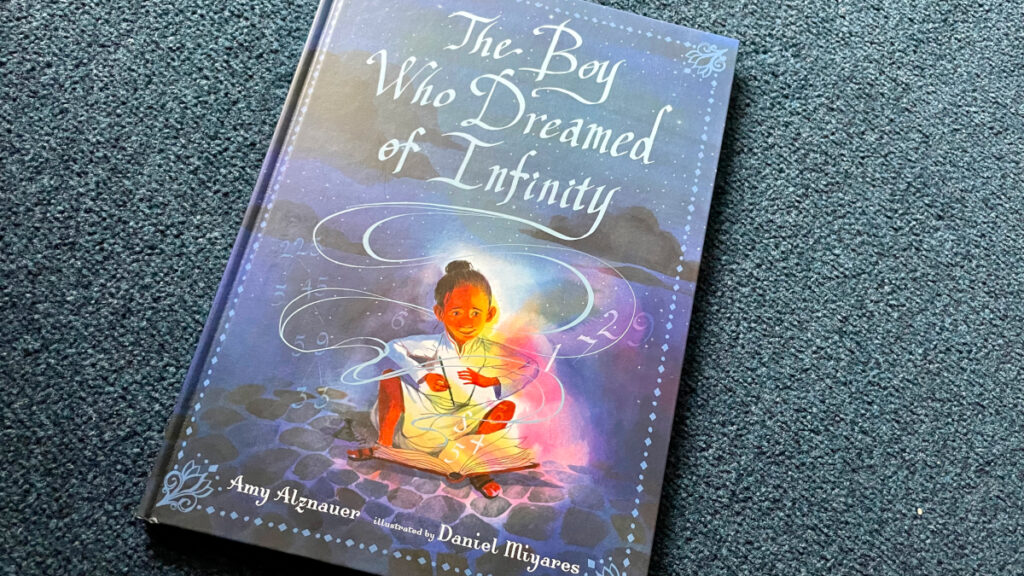Does this picture make you think of Srinvasa Ramanujan? I’m always fascinated by the pace and range of little conversations with my seven-year-old son that wander in and out of maths. Let me tell you how we got there during a five minute chat while leaving the house and walking to school this morning.

He was putting his shoes on for school and his mum remarked how big his new trainers are, that they are almost as big as hers. Next he was comparing them by holding them against other shoes on the shoe rack. My feet are much bigger.

His mum joked that my feet are too big, and if I’d just consent to losing a few toes we could fit me in a smaller shoe. For some reason, this made him think about a character in One Fish Two One Fish Two Fish Red Fish Blue Fish by Dr. Seuss who has eleven fingers in an uneven split, but he couldn’t remember the split. It’s a brilliant entry in the book because it isn’t ten and it isn’t evenly split, encouraging some ‘out of the box’ thinking for the age range it’s aimed at. I don’t think he’s read this book for a while, but he’s brought it up before – it’s his go-to item for an unconventional number of fingers or toes.

I said “I don’t think it’s as simple as 5-6”. His mum said “what else could it be?” He said “ten and one”. She said “what are all the options for what it could be? There you are, that’s your topic for your walk to school!”
As I was opening the door he quickly rattled off “two and nine, three and eight…” I said “I don’t think this is going to last the whole walk!” and she shouted after us “do 15 next!”
He quickly got to “five and six” then said “and then it’s six and five, and it goes on from there”. He explained that he did it by following the pattern of increasing one number and decreasing the other. We talked about how there was a symmetry there.
I said that splitting a number into numbers that add up to it is a topic called partitions. He said “I know”. I said “is that a term you use at school?” He said “not often”. I don’t know if ‘partition’ is actual primary school terminology or something he’s picked up in a book.
I spoke about how you can think about dividing numbers into more than two parts, and thinking about how many parts you can partition a number into is a hard problem as the numbers get bigger. I told him someone who had been really good at this problem was Ramanujan. He has a book about Ramanujan so was interested to hear this – he said “that makes sense because he’s the boy who dreamed about infinity”.

He told me that in the book Ramanujan splits a fruit, perhaps a mango, into parts and then puts it back together. He said “Ah! Fractions are partitions!”
Then he said “the easiest way to split 11 into numbers is if you had an alien with eleven arms and each arm had one finger, then it would be one plus one plus one plus one plus one plus one plus one plus one plus one plus one plus one”. At this point we were passing the gate of a secondary school and the teacher waiting there to sign in late arrivals gave a chuckle and caught my eye with a grin.
He thought for a minute then announced that he couldn’t split eleven into twos. I said he could do some twos and some ones, so we enumerated these for a bit. Then I said “and that’s just the ways using only ones and twos. How many ways do you think there are in total?” He laughed and said “loads!”
At this point we saw a friend of his who was in the school newsletter for being good at speaking French, and he starting talking about her. So ended our journey from comparing shoe sizes to chopping off my toes to partition numbers!
All this happened within about five minutes. It’s fun to let his mind wander, with the occasional prompt, and see what it sparks. I think no amount of planning on my part could have got us from comparing the sizes of shoes to partition numbers so quickly!
> no amount of planning on my part could have got us from comparing the sizes of shoes to partition numbers so quickly
Reminds me of this quote by John Holt I saw the other day:
“We can best help children learn, not by deciding what we think they should learn and thinking of ingenious ways to teach it to them, but by making the world, as far as we can, accessible to them, paying serious attention to what they do, answering their questions — if they have any — and helping them explore the things they are most interested in.”
It’s a good system!